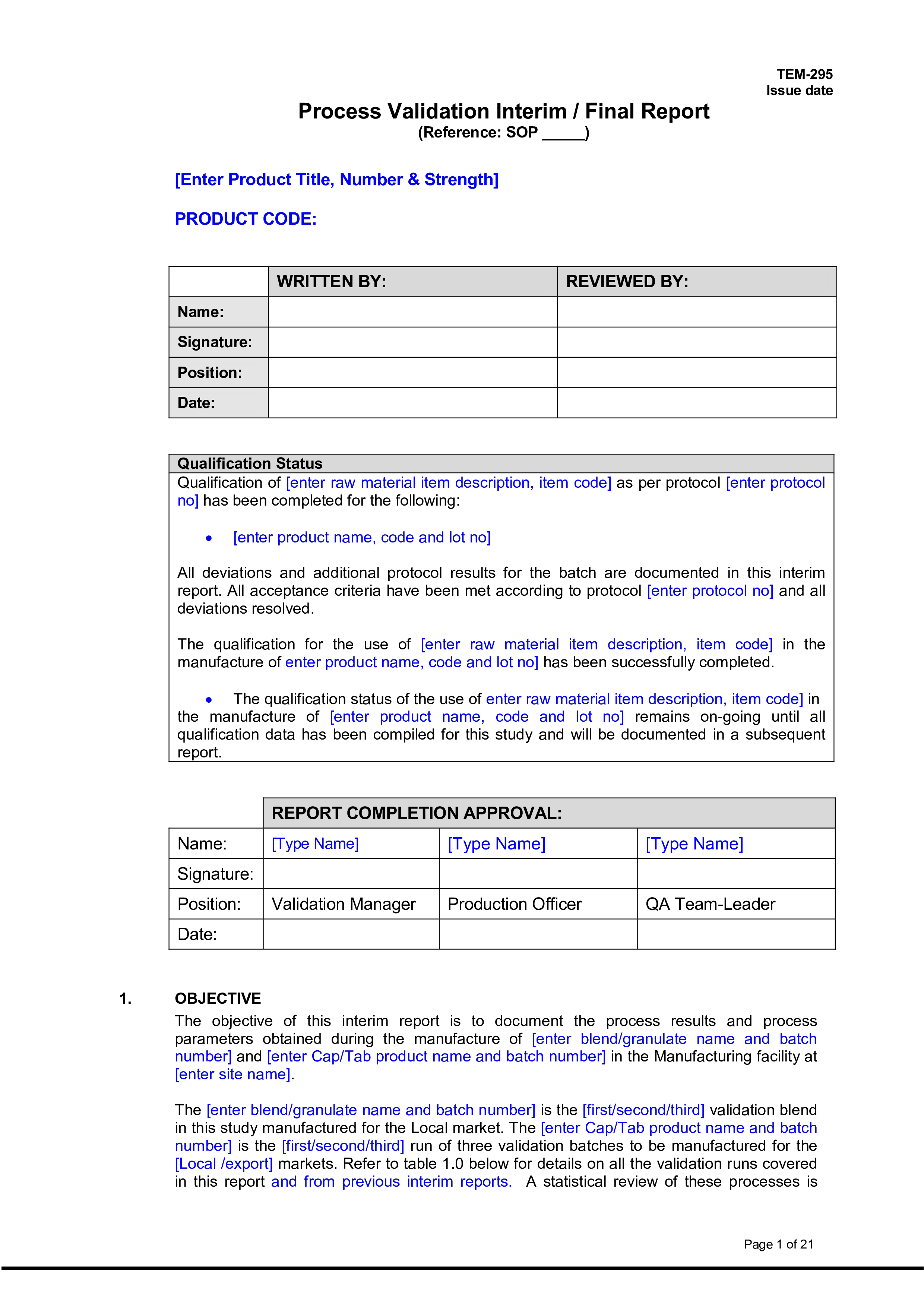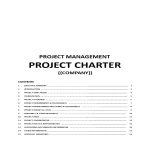Process Validation
Sponsored Link免费模板 保存,填空,打印,三步搞定!

Download Process Validation
Adobe PDF (.pdf)其他可用语言:
- 本文档已通过专业认证
- 100%可定制
- 这是一个数字下载 (94.77 kB)
- 语: English
Sponsored Link
How to create a process validation status report? Do you need a process validation template? We offer a sample template to help you validate your processes. Our templates are designed to ensure that you can quickly identify potential issues and develop solutions. We also provide guidance to help you get started.
Process validation is a systematic and documented approach used in various industries, including manufacturing, pharmaceuticals, and healthcare, to ensure that a specific process consistently and reliably produces products or services that meet predetermined quality standards and specifications. The primary goal of process validation is to confirm that a process is capable of consistently delivering products or services that meet the intended requirements, reducing the risk of defects, errors, and safety concerns.
There are three main stages of process validation:
- Process Design (Stage 1): In this stage, the process is designed and developed, including defining critical parameters, specifications, and control measures. This phase involves determining the factors that can influence the process and product quality and establishing acceptable ranges for those factors. It's important to design the process in a way that minimizes variability and risk.
- Process Qualification (Stage 2): During this stage, the process is tested and validated to ensure that it consistently produces products or services that meet the established design specifications. This includes running multiple trials, collecting data, and analyzing the results to demonstrate that the process is under control and capable of meeting the specified requirements. It often involves running a series of production runs and using statistical methods to assess the process's performance.
- Continued Process Verification (Stage 3): After a process is validated, ongoing monitoring and verification are essential to ensure that the process remains in a state of control. This includes routine monitoring, data analysis, and periodic revalidation to ensure that the process continues to meet its specifications.
Process validation is particularly critical in industries with stringent quality and safety requirements, such as pharmaceutical manufacturing, where the consistency and reliability of drug production processes can have a significant impact on patient safety. It also plays a crucial role in manufacturing settings to prevent defects, reduce waste, and ensure product quality.
Overall, process validation helps organizations and industries:
- Ensure product and service quality and safety.
- Reduce the risk of defects and errors.
- Comply with regulatory requirements and standards.
- Optimize and improve processes over time.
- Build confidence in the reliability and consistency of their products or services.
The specific methods and requirements for process validation can vary depending on the industry, regulatory environment, and the nature of the process being validated. Organizations typically develop validation protocols and procedures tailored to their specific needs and requirements.
Download this Process Validation report and save yourself time and effort! You will see completing your PM task just became a little easier.
DISCLAIMER
Nothing on this site shall be considered legal advice and no attorney-client relationship is established.
发表评论。 如果您有任何问题或意见,请随时在下面发布
相关文件
Sponsored Link


